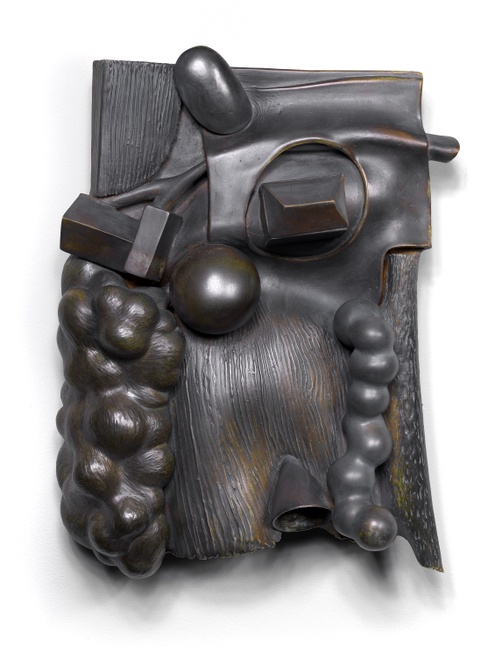Rose White ’20
Skidmore College
“If you don’t tell your own story, someone else will, and it’s not always the version you think is the most accurate,” Syd Carpenter told Olivia Golden ’18 and me when we sat down to discuss the artist’s sculptures and questions of history and identity.(1) In this quote, Carpenter describes how one’s words and actions can be skewed by others and the desire she feels to tell her own narrative. Carpenter speaks through her sculpture. She is most well known for her series Places of Our Own and More Places of Our Own, which use as inspiration maps of African American farms from the book African-American Gardens and Yards in the Rural South by Richard Westmacott (1992). One of her early works from the former series is Ellis and Anna Mae Thomas. The sculpture, like the others in the series, responds to Westmacott’s maps.
At first glance, the sculpture looks like an abstract patchwork of different shapes and textures, but once its source material is known, the landscape becomes clear. Carpenter begins the process of making these sculptures by conceptualizing “what a flat form looks like when it inhales.” From there she plays with the composition like a collage, moving different pieces around until they fit. The addition of texture, corresponding with the maps but guided by her conversation with the clay, breathes additional life into the sculpture. Reinterpreting these topographical maps transforms them into sculptures that are inviting, that beg the viewer to examine them closer, and that can exist as works of art independent from the maps.
What drew Carpenter to Westmacott’s book “was that it was one of the first actual documents that really examined the history and legacy of African American farmers, something that is an obscured history and legacy. When we think about farming in this country, probably the last image you come up with is of an African American farmer.” By creating these sculptures, Carpenter reminds us of an often-unseen American farmer who is not the white man holding a pitchfork as in Grant Wood’s American Gothic (1930), but a highly skilled dark-skinned worker with an ancestry of farming expertise. Even though she is not depicting the farmers’ faces, she pays homage to their work and legacy.
Carpenter herself is an African American gardener and the discovery that her grandmother had a victory garden during World War II that helped feed the community further showed her how truly connected she is to this shrouded history. Carpenter’s family history of working with the land gave her a sense of urgency to create work that honors people who have gone unrecognized. Through her art, Carpenter draws attention to the obscured history of African American farmers and gardeners with the hope of shedding a light on this history and creating a dialogue about it. By doing so, she takes control of the narrative, telling her story and the stories of others like her.


